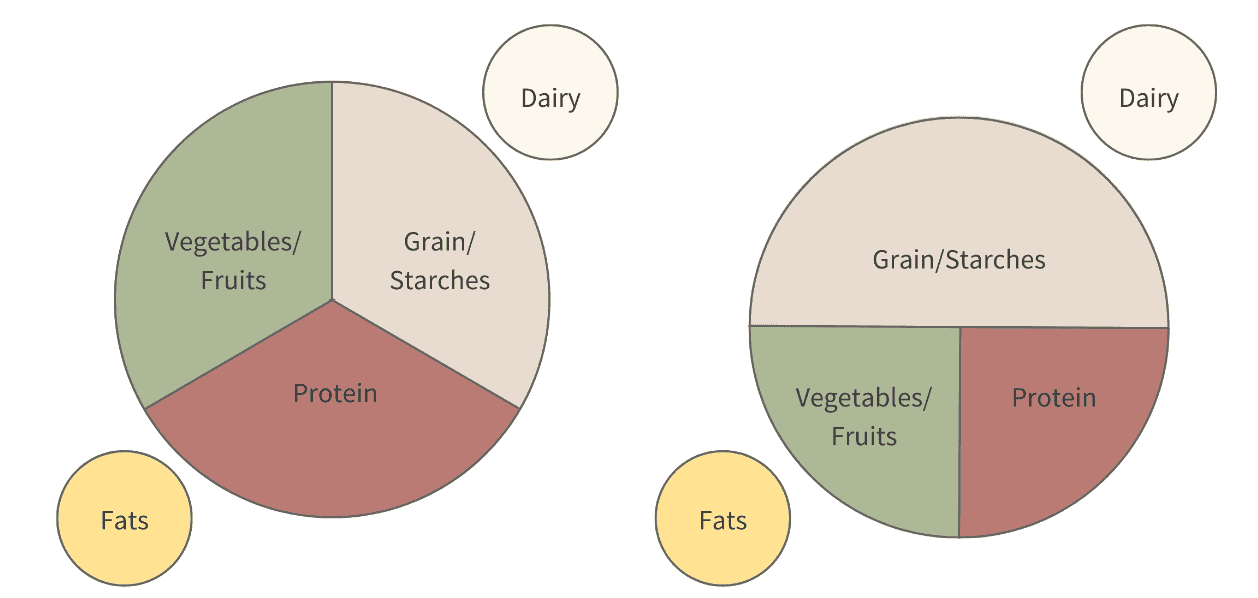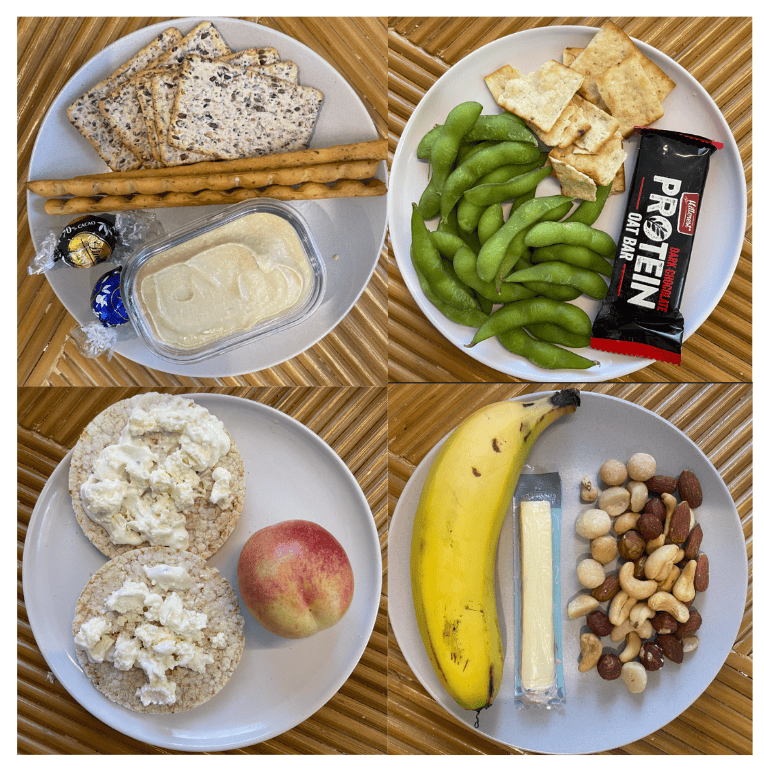In our society, the conventional approach to nutrition often involves looking at food as a big maths equation, making it difficult to practice gentle nutrition. Portion control and calorie and macro tracking may come to mind. For those who love maths, equations or perhaps the feeling of a “right” answer this can feel exciting. Yet research has found that focusing on food in this way can have harmful consequences on our overall health and well being. Qualitative studies looking at individuals using tracking apps to monitor foods found that individuals began to view food primarily through its caloric and macronutrient content and their diet became more rigid (1,2).
One app user explained, “You look at food differently… It’s a number game basically” (1). App users also report experiencing “constant guilt” and engaging in “self-judgement based on bad diet days” due to this numerical perspective (2).
For some people, and in some circumstances, numbers related to food and eating can be neutral, supportive and an important way to help them navigate food and eating and how they take care of themselves.
Have you ever found yourself getting fixated over numbers though? Making up for something? Saving up for something? Do you ever get towards the end of the day and feel anxious or judge yourself based on the metrics, or choose to opt out of a social eating occasion?
A Different Approach: The Plate-by-Plate Model for Intuitive Eating
What if you didn’t have to eat based on portion control or tracking numbers? The alternative to counting calories is focusing on how meals feel and fuel your body. The Plate-by-Plate Approach is a refreshing and simplified way to approach food that can support you while you heal your relationship with food. The model, which we often recommend to clients, supports us to build a balanced, nutritionally adequate meal without focusing on the quantitative aspects of food. It was originally developed by two Dietitians for the treatment of eating disorders but has now evolved as a tool that anybody can use, whether it’s to support you with planning meals, or if you are on an Intuitive Eating journey or for managing specific health conditions.
Unlike the approaches that are focused on a singular aspect such as portion size, calories, or macros, the Plate-by-Plate model introduces the concept of food synergy, making it a balanced meal framework that works for all bodies. This is the idea that a flexible and varied combination of different food groups across meals provide benefit (3,4). It’s not about the isolated nutrients or single foods, but that the health benefits emerge from the collective contribution of a variety of foods across diverse food groups that are incorporated into one’s overall eating pattern.
The Five Food Groups in the Plate-by-Plate Model:
- Grains and Starches: Rich sources of carbohydrates essential for brain, heart, and muscle function. Examples include pasta, rice, bread, potatoes, and oatmeal.
- Protein: Essential building blocks for the body. Examples include chicken, beef, fish, tofu, and beans.
- Vegetables and fruits: Packed with vitamins, minerals, antioxidants, and different types of fibres. Examples include apples, bananas, broccoli, and mushrooms.
- Fat: Essential for brain function, hormones and satiety. Examples include oils, butter, cheese, dressings, nuts, and nut butters.
- Dairy or Dairy Alternatives: Crucial for bone health and maintaining a steady heart rhythm. Examples include milk, cheese, yoghurt, calcium fortified soy milk and tofu.

33% Plate Model 50% Plate Model
What are the Benefits of This Approach?
The benefits of the Plate-by-Plate approach are many!
- Focuses on All Food Groups: Often, we may associate healthy eating solely with consuming lots of salads and vegetables in various forms. However, this neglects how crucial it is to have balance for our overall well-being. Our brains, for instance, depend on a continual source of carbohydrates to function. Similarly, maintaining strong bones and muscles requires the inclusion of dairy and dairy alternative products.
- Encourages Mealtime Variety: It’s important to note that not getting all five food groups in one meal every meal is normal and okay. For example, if you haven’t had any sources of dairy for breakfast and lunch, you may consider pairing a yoghurt with your snack later on. We have many opportunities to eat in a day, let alone a week. So it’s not about getting it perfect, but rather to use it as a framework that can be supportive in guiding us towards aiming at “for the most part”.
- Visual Tool Without Measuring: Offers a visual guide without the need for measuring or strict portion control. Some of us are visual learners and this simply works better for us.
- Normalizes Eating: Can be easily practised at home or when dining out, promoting a more natural and social approach to meals.
- Easy Grocery Shopping: Simplifies grocery shopping because the focus is on buying a variety of tasty foods in the three main categories (protein, grains/starches, fruits/vegetables) along with two other essential groups (fats, dairy/calcium). “What could I add in that would be tasty here?”.
How Do I Implement It?
The Plate-by-Plate approach promotes establishing a rhythmic and regular pattern of eating throughout the day. For most people this looks like having three anchor meals and 2-3 snacks. Working with a non-diet nutritionist can help ensure that this approach, like any other, is supportive of your unique nutrition needs and experiences of and with food and eating.. Below are some steps to guide you with implementing this approach.
- Choose a 25 cm dinner plate without a lip/raised rim.
- Choose the distribution (33% or 50%) This is based on your age, exercise, goals, nutritional requirements, need for weight restoration etc.
- Include all the food groups on your plate to create a balanced meal (remember-”for the most part”).
- Fill up the plate so there isn’t empty space.
- Ask yourself, would you serve this plate of food to a friend?
What About Snacks?
Snacks are recommended because they can support your metabolism, keep your energy levels stable and prevent getting too hungry (or hangry). You can use a bread roll sized plate for snacks and the idea is to pair two or more different food groups. So an apple and carrots would not be considered a complete snack but some apple slices with cheese slices provides the food synergy that will support us best.
Sometimes all we’ve got on hand might be apples and carrots though (for multiple reasons) and choosing to eat at a regular snack or meal time with whatever you’ve got is always going to be more nourishing and supportive then choosing not to. You have a next eating occasion on the horizon to practise offering yourself other types of foods.
Ideas and Examples
Breakfast: Toast with scrambled egg, blueberries and glass of milo
2 slices of Toast (starch), eggs (protein), blueberries (fruit), milo (dairy)
Snack: Hummus and crackers
Hummus (protein) and crackers (starch)
Lunch: Sandwich + peach
Bread (starch), chicken (protein), peach, lettuce, tomato and onion (fruit/veg), cheese (dairy) and mayonnaise (fat).
Snack: Apple slices, yoghurt and chocolate
Apple (fruit), yoghurt (dairy) and chocolate (yum)
Dinner: Asian stir fry
Rice (starch), beef (protein), mixed vegetables (vegetables), oil in stir fry (fat).
Summary
While certainly not the only approach that can support you as you heal your relationship with food, the Plate-by-Plate Approach offers a refreshing departure from the traditional focus on numbers which can be problematic for many. For additional ideas and inspiration, consider following the Plate by Plate Instagram account (@platebyplateapproach) or check out our snack life Sundays posts @wanderandnourish.
References
- Eikey EV. Effects of diet and fitness apps on eating disorder behaviours: qualitative study. BJPsych Open. 2021 Sep;7(5):e176.
- Honary M, Bell BT, Clinch S, Wild SE, McNaney R. Understanding the Role of Healthy Eating and Fitness Mobile Apps in the Formation of Maladaptive Eating and Exercise Behaviors in Young People. JMIR Mhealth Uhealth. 2019 Jun 18;7(6):e14239.
- Jacobs DR Jr, Gross MD, Tapsell LC. Food synergy: an operational concept for understanding nutrition. Am J Clin Nutr. 2009 May;89(5):1543S – 1548S.
- Jacobs DR, Tapsell LC. Food synergy: the key to a healthy diet. Proc Nutr Soc. 2013 May;72(2):200–6.



